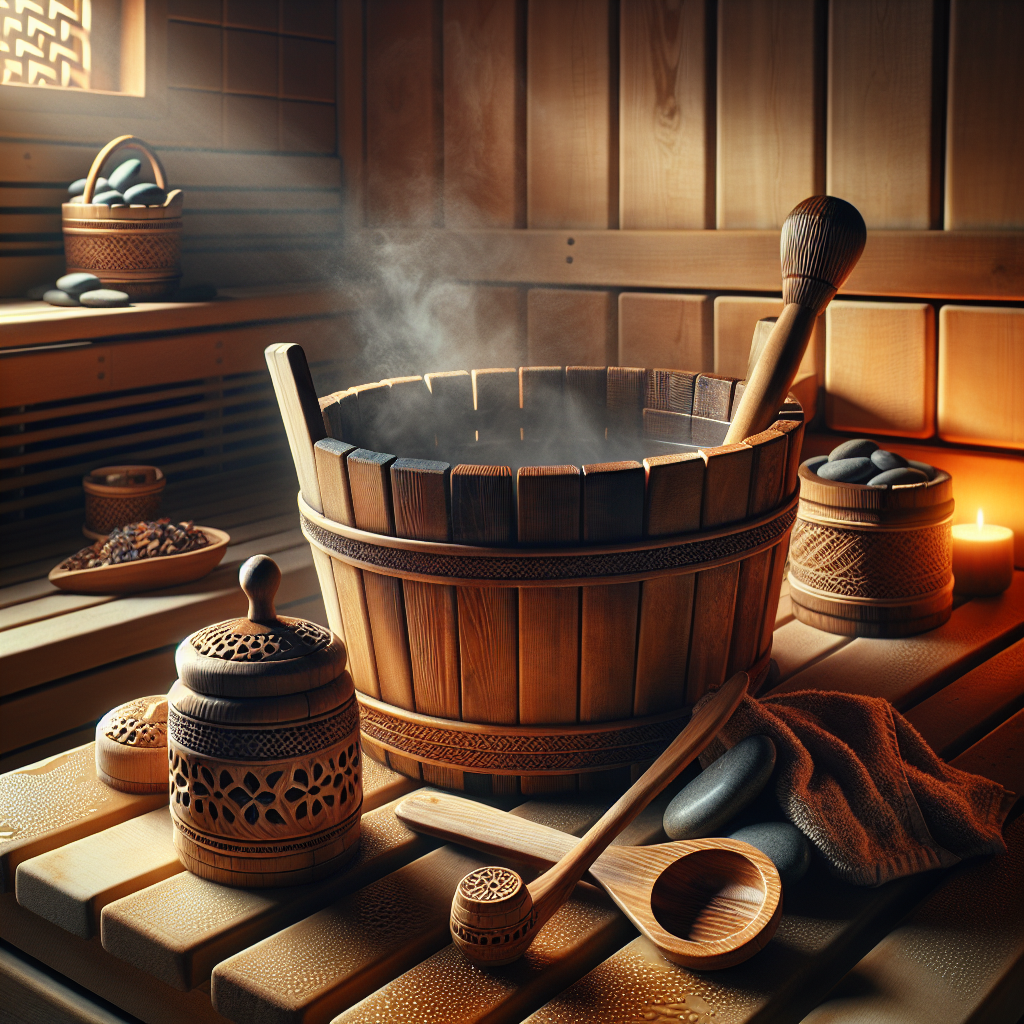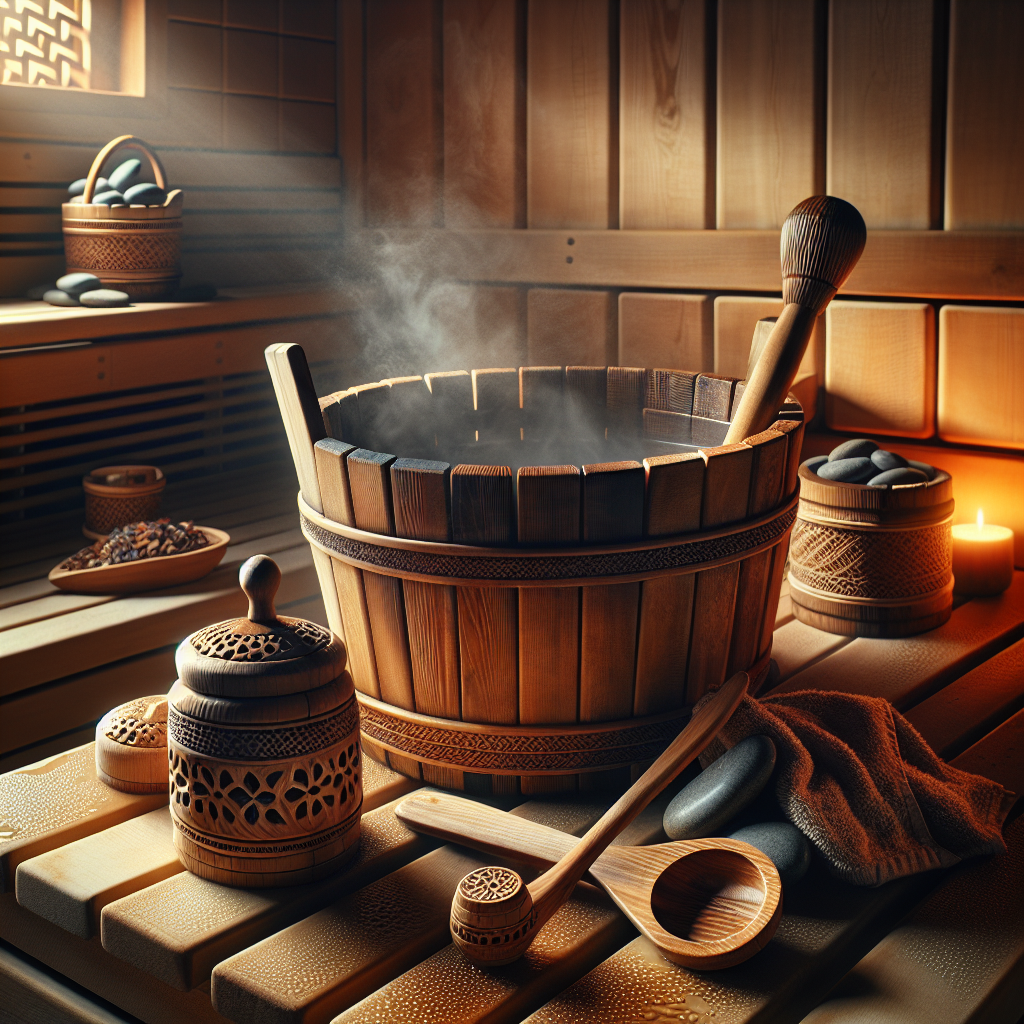Have you ever wondered about the intricate process behind the construction of traditional saunas? Whether you’re a sauna enthusiast or simply curious, this article will take you on a journey through the fascinating world of traditional sauna construction. From the choice of materials to the art of craftsmanship, you’ll discover the secrets of building these serene sanctuaries of heat and relaxation. So sit back, relax, and let’s dive into the captivating world of traditional sauna construction.

Materials Used in Traditional Saunas
Wood
Wood is the primary material used in the construction of traditional saunas. The most commonly used type of wood is cedar, due to its natural resistance to decay and its pleasant aroma. Cedar wood also has excellent insulation properties, which is important for maintaining the desired temperature inside the sauna. Other types of wood that are sometimes used include pine, spruce, and hemlock.
Insulation
Insulation is a crucial component in traditional sauna construction as it helps to retain heat and improve energy efficiency. Fiberglass insulation is commonly used and is installed between the sauna walls to prevent heat loss. This insulation is typically covered with vapor barrier to create a moisture-resistant barrier.
Vapor Barrier
Vapor barrier is used to prevent moisture from penetrating the sauna walls. It is typically made of aluminum foil or a similar material that acts as a barrier against moisture and helps maintain the sauna’s integrity. This vapor barrier is installed on the inside of the insulation layer to ensure effective moisture control.
Bench Materials
The benches in traditional saunas are usually made from the same wood used in the rest of the sauna construction. Cedar or other types of wood that can withstand high temperatures and moisture are typically used for bench construction. The benches should be carefully designed to provide comfortable seating and allow for proper air circulation throughout the sauna.
Construction Process for Traditional Saunas
1. Planning and Design
Before starting the construction of a traditional sauna, careful planning and design are essential. This involves determining the size and layout of the sauna, as well as selecting the right location within the space available. Considerations such as access to electricity, ventilation, and plumbing may also be taken into account during the planning phase.
2. Frame Construction
The first step in building a traditional sauna is constructing the frame. A sturdy frame is needed to support the weight of the sauna walls, ceiling, and other components. Kiln-dried wood is typically used for the sauna frame to prevent warping and ensure structural integrity.
3. Insulation Installation
Insulation is then installed between the sauna walls to improve heat retention and energy efficiency. Fiberglass insulation is commonly used, and it is placed within the frame before the walls are covered.
4. Wall and Ceiling Assembly
Once the insulation is in place, the sauna walls and ceiling are assembled. The wood planks are securely attached to the frame, creating a tight and sealed space. The walls and ceiling may be reinforced with additional supports to ensure stability and durability.
5. Installation of Sauna Door
Next, a sauna-specific door is installed. The sauna door should be well-insulated and fit tightly to minimize heat loss. It is typically made of glass or wood and designed to withstand high temperatures.
6. Bench Construction
The benches are built and installed inside the sauna. Care is taken to ensure proper spacing between the benches for comfortable seating. The benches may be attached to the sauna walls or constructed as standalone units.
7. Electrical Wiring
Electrical wiring is installed to power the sauna’s heating elements and any additional components such as lighting or audio systems. It is important to hire a licensed electrician to ensure proper installation and compliance with safety regulations.
8. Flooring Installation
The sauna floor is then constructed and installed. The flooring should be able to withstand high temperatures and moisture. Common choices for sauna flooring include cedar planks or tiles specifically designed for sauna use.
9. Ventilation System
A proper ventilation system is critical to maintain air circulation and prevent excessive humidity and odors inside the sauna. Ventilation vents and fans are installed to ensure fresh air supply and proper airflow.
10. Final Touches and Finishing
Finishing touches such as trim, sealing, and staining are added to enhance the aesthetics and durability of the sauna. Sealants are applied to protect the wood from moisture and ensure longevity. Once the construction is complete, the sauna is thoroughly cleaned and sanitized before it can be used.
Special Considerations in Traditional Sauna Construction
Moisture Control
Effective moisture control is essential in traditional sauna construction to prevent mold, mildew, and damage to the wood. The use of quality insulation and vapor barrier, along with proper ventilation, helps to maintain the ideal moisture levels inside the sauna.
Temperature Regulation
Traditional saunas require careful temperature regulation to ensure a comfortable and safe experience. This is achieved through the proper installation of heating elements, such as electric or wood-burning stoves, along with the use of insulation and ventilation systems.
Fire Safety
Fire safety is of utmost importance in traditional sauna construction. Saunas are typically equipped with smoke detectors and fire alarms, and fire-resistant materials are used in key areas such as the sauna walls, ceiling, and door. It is crucial to follow local building codes and regulations to ensure the highest level of fire safety.
Traditional Sauna Designs
1. Finnish Sauna
The Finnish sauna, also known as a dry sauna, is the most popular and well-known traditional sauna design. It is characterized by high temperatures ranging from 170°F to 190°F (77°C to 88°C) and low humidity levels. Finnish saunas often utilize a wood-burning stove as the heat source, providing a unique and authentic experience.
2. Russian Banya
The Russian banya is similar to the Finnish sauna but is known for its intense heat and steam. Banyas often feature higher humidity levels achieved by pouring water over hot stones or using steam generators. The high humidity creates a more cleansing and invigorating experience.
3. Turkish Hammam
The Turkish hammam is a traditional sauna design that focuses on the combination of heat, steam, and bathing rituals. It typically includes separate sections for hot, warm, and cold bathing, allowing users to progress through different heat levels. The hammam is known for its intricate tile work and marble construction.
4. Japanese Onsen
The Japanese onsen is a traditional hot spring sauna that combines the therapeutic benefits of hot water and heat. Onsens are natural sources of hot water, and traditional Japanese onsen saunas replicate this experience. The focus is on relaxation and rejuvenation, with various baths of different temperatures available.
5. Native American Sweat Lodge
The Native American sweat lodge is a traditional sauna used for purification ceremonies and spiritual rituals. These saunas are typically made of natural materials such as branches, blankets, and animal hides. The sweat lodge is heated by stones that are heated outside the lodge and brought in to provide warmth and steam.
Maintenance and Upkeep of Traditional Saunas
Cleaning and Sanitizing
Regular cleaning and sanitizing are essential to ensure a clean and hygienic sauna environment. The sauna should be swept or vacuumed to remove dust and debris, and any spills should be promptly cleaned. Sauna surfaces can be wiped down with a mild disinfectant to prevent the growth of bacteria and fungi.
Operating Instructions
Understanding and following the manufacturer’s operating instructions for the heating elements and ventilation system is important for safe and optimal use of the sauna. This includes knowing the recommended temperature and duration of sauna sessions, as well as any specific maintenance requirements.
Preventing Mold and Mildew
Proper moisture control and ventilation are key to preventing the growth of mold and mildew in traditional saunas. Regularly inspecting and cleaning the sauna’s ventilation system, checking for any leaks or excessive moisture, and promptly addressing any issues can help prevent mold and mildew from developing.
Wood Treatment
To maintain the beauty and durability of the sauna, periodic wood treatment is recommended. This may involve applying a protective sealant or oil specifically designed for sauna use. Wood treatment helps prevent moisture damage, inhibits the growth of bacteria, and enhances the lifespan of the sauna.
In conclusion, traditional sauna construction involves careful selection of materials, meticulous planning, and adherence to safety regulations. Whether it’s the Finnish sauna, Russian banya, Turkish hammam, Japanese onsen, or Native American sweat lodge, each traditional sauna design offers a unique experience. Regular maintenance and upkeep are vital to ensure a hygienic and enjoyable sauna environment for years to come. By understanding the construction process and considering special considerations, you can create your own little haven of relaxation and wellness right in your own home.

